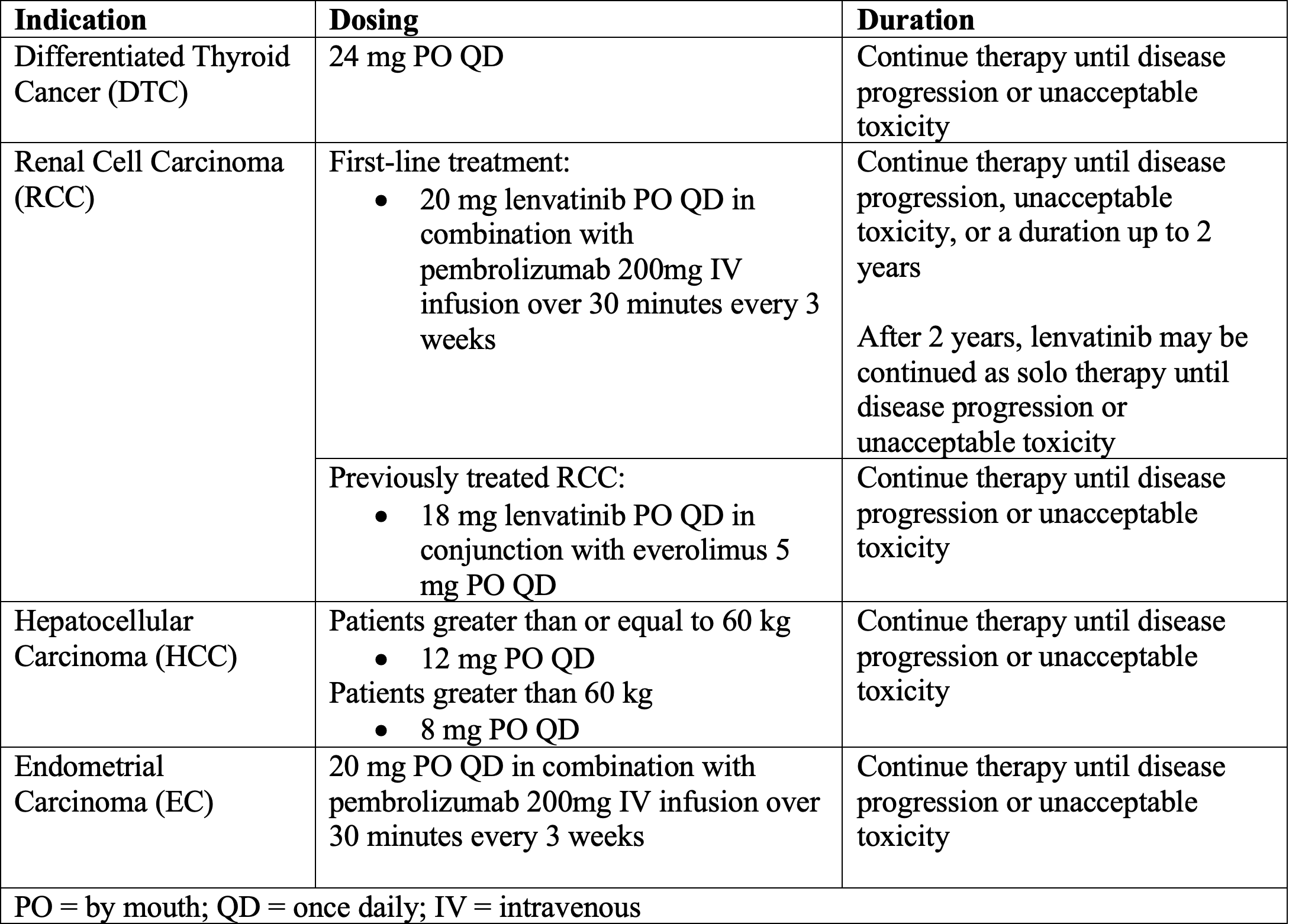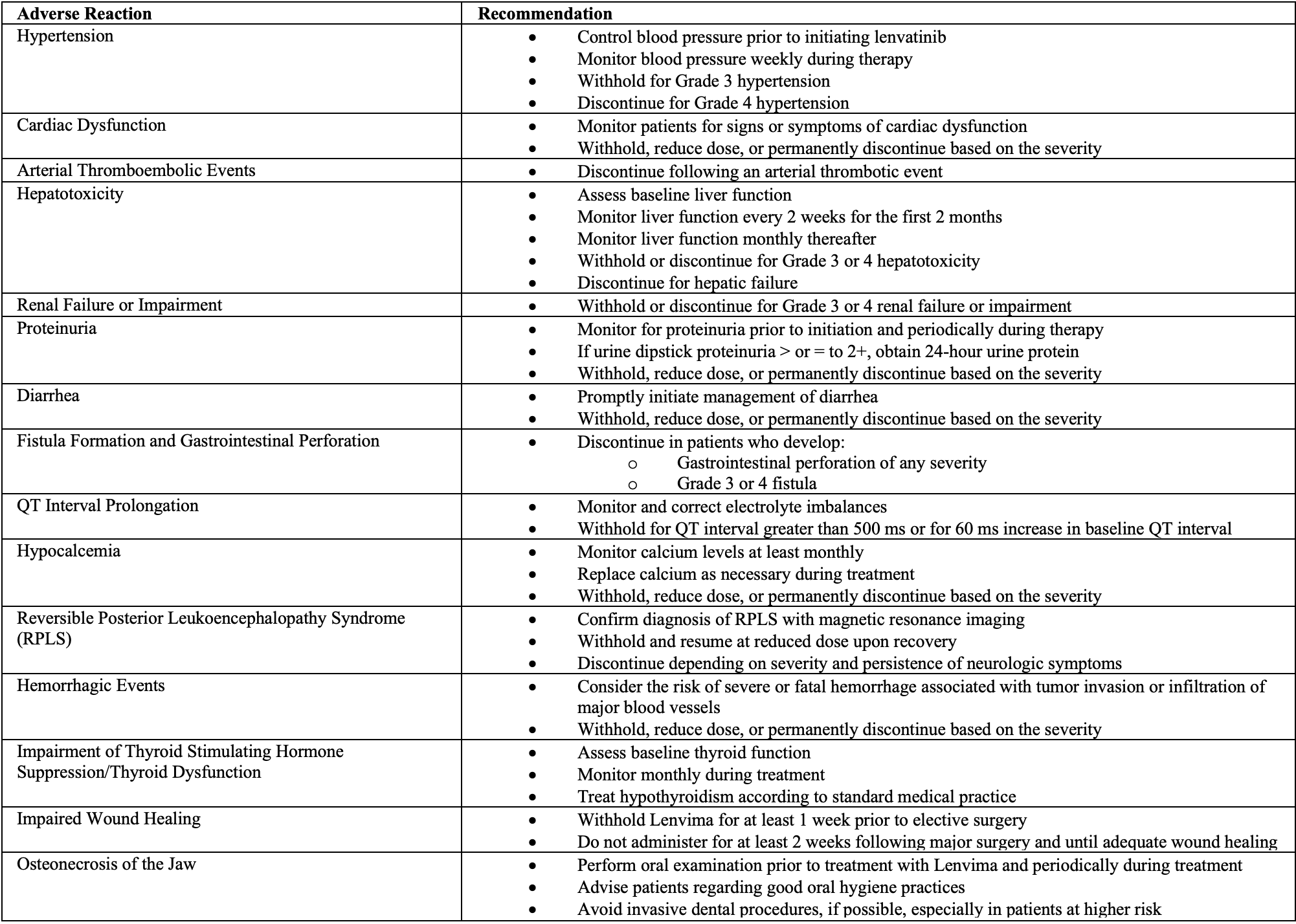Article
Oncology Overview: Lenvatinib (Lenvima) for Multiple Cancer Types
Author(s):
Lenvima (lenvatinib) is approved for the treatment of thyroid cancer, renal cell carcinoma, hepatocellular carcinoma, and endometrial carcinoma.
Introduction
Lenvima (lenvatinib) is a kinase-inhibiting medication FDA-approved for the treatment of the following cancers:1
- Differentiated thyroid cancer (DTC) as a single agent to treat patients with locally recurrent or metastatic, progressive, radioactive iodine-refractory DTC.
- Renal cell carcinoma (RCC):
- In combination with pembrolizumab as first-line treatment for patients with advanced RCC.
- In combination with everolimus to treat patients with advanced RCC who previously tried at least 1 prior anti-angiogenic therapy.
- Hepatocellular carcinoma (HCC) as a single, first-line agent to treat patients with unresectable HCC.
- Endometrial carcinoma (EC) in combination with pembrolizumab for the treatment of patients with advanced EC that is not microsatellite instability-high or mismatch repair deficient, who have disease progression following prior systemic therapy, and are not candidates for curative surgery or radiation.
Mechanism of Action1
Lenvatinib inhibits the kinase activities of vascular endothelial growth factor (VEGF) receptors VEGFR1-3, fibroblast growth factor (FGF) receptors FGFR1-4, platelet-derived growth factor receptor alpha (PDGFR⍺), stem cell factor receptor (KIT) and rearranged during transfection (RET). By inhibiting these receptors’ function, lenvatinib has the potential to inhibit pathogenic angiogenesis, tumor growth, and cancer progression.
Dosage and Administration1
Lenvatinib is available as 4 mg and 10 mg capsules packaged in cartons of 6 cards. Each card provides a 5-day supply of medication based on the established daily dose. For example, if the daily dosage of lenvatinib is 24 mg, the appropriate carton would contain 6 cards, each with ten 10 mg capsules and five 4 mg capsules per card.
Lenvatinib is stored at room temperature, administered with or without food, and taken at the same time each day. If patients miss a dose of lenvatinib, they should take it as soon as possible. If they cannot take the dose within 12 hours, they should skip it and take the next dose at the usual time. Table 1 summarizes the dosing recommendations for each of the different FDA-approved indications.
Table 1. Lenvatinib Dosing in Patients Diagnosed with FDA-approved Indications1

Dosage modifications, including dose interruption, reduction, and discontinuation, are necessary for patients with severe renal and hepatic impairment and those experiencing severe adverse events (AEs). Please refer to the most current manufacturer package labeling for specific recommendations.
AEs
The most common AEs observed during clinical trials with lenvatinib include:
- Hypertension
- Fatigue
- Diarrhea
- Arthralgia/myalgia
- Decrease in appetite
- Weight loss
- Nausea
- Stomatitis
- Headache
- Vomiting
- Proteinuria
- Palmar-plantar erythrodysesthesia syndrome
- Abdominal pain
- Dysphonia
Warnings and Precautions1
Table 2 summarizes the numerous warnings and precautions associated with lenvatinib.
Table 2. Warnings and Precautions associated with Lenvatinib1

Pregnancy and Lactation1
Oral administration of lenvatinib in animal trials resulted in fetal toxicity. To date, there have been no trials in humans. Advise the patient to use contraception throughout treatment and at least 30 days after the last dose.
It is unknown whether lenvatinib passes into breast milk. Advise patients not to breastfeed during treatment and at least 1 week after the last dose.
About the Author
Jennifer Salvon is a licensed pharmacist in Massachusetts and Connecticut and a student in UConn's Medical Writing Certificate Program.
References
- LENVIMA prescribing information. December 2021. Accessed May 9, 2022. https://www.lenvima.com/-/media/Project/EISAI/Lenvima/PDF/prescribing-information.pdf
Newsletter
Stay informed on drug updates, treatment guidelines, and pharmacy practice trends—subscribe to Pharmacy Times for weekly clinical insights.






